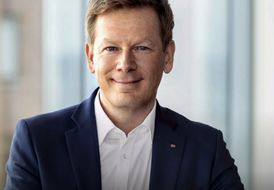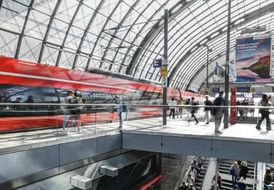Noise remediation and control
Noise remediation and control in Germany | 2022 | 2021 | 2020 |
Noise remediation (existing network) | |||
Noise barriers completed (km) | 37.7 | 44.2 | 75.1 |
Homes with passive measures | 1,484 | 1,820 | 1,485 |
Track kilometers noise-remediated in total as of Dec 31 (km) | 2,202 | 2,110 | 2,039 |
Total noise remediation areas relieved by noise prevention (km) | 52.1 | 52.1 | 49.9 |
Noise prevention (New and expansion lines) | |||
Noise barriers completed (km) | 33.2 | 41.2 | 18.4 |
Homes with passive measures | 714 | 590 | 1,173 |
Since the voluntary noise remediation program began on existing Federal rail tracks in 1999, we have reduced noise pollution for local residents. By means of stationary noise protection measures, such as noise barriers, soundproof windows and noise-proof ventilators in residential buildings, we are remedying noise on existing, particularly affected lines. We have achieved our target for reduced-noise lines, as forecast in the 2021 Integrated Report.
Federal budget utilization
In 2022, about €115 million of Federal budget funds were spent on active and passive noise remediation measures as part of the noise reduction program, with additional noise barriers being installed and additional apartments being fitted with sound-proofing measures. In addition, Federal funds are being used to finance other special issues in noise reduction, such as the implementation of the measures featured in the feasi- bility study in the Middle Rhine Valley.
Reduction of trigger values
The budgetary legislature 2021 reduced the trigger values for noise remediation on existing Federal rail tracks by a further 3 dB(A) to 54 dB(A) at night in residential areas. Since the revised noise remediation guideline came into force on July 1, 2022, the new trigger values have been applied. This reduction has now been taken into account in an overall concept developed by the Federal Government in cooperation with DB Group. DB Group implements the soundproofing measures which are eligible for funding in the relevant affected areas on the basis of a noise analysis and using the prioritization in the overall concept.


